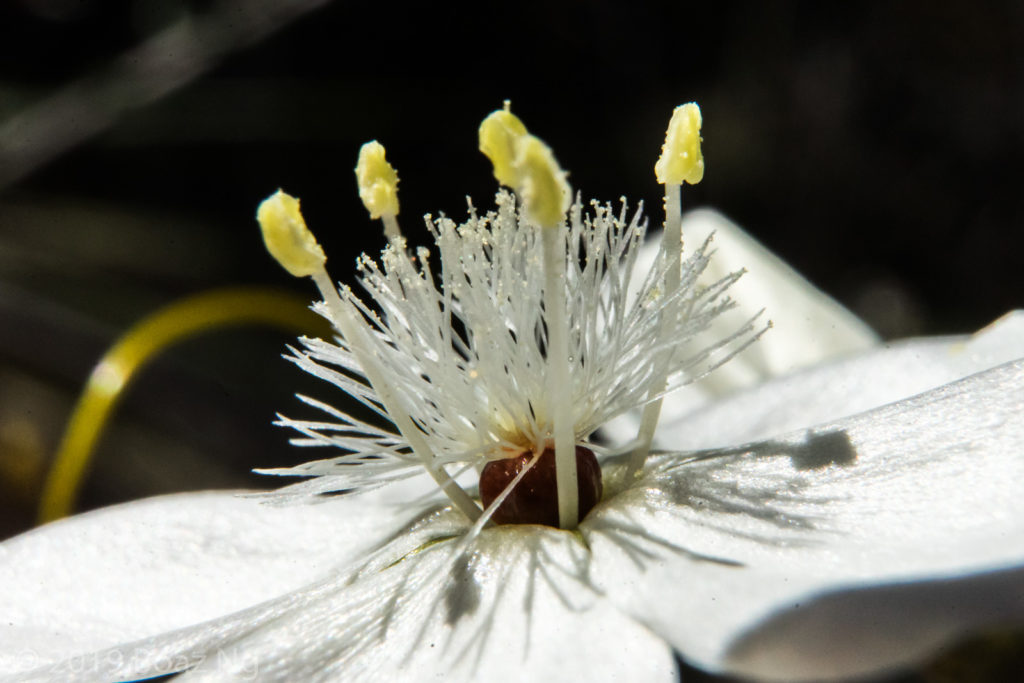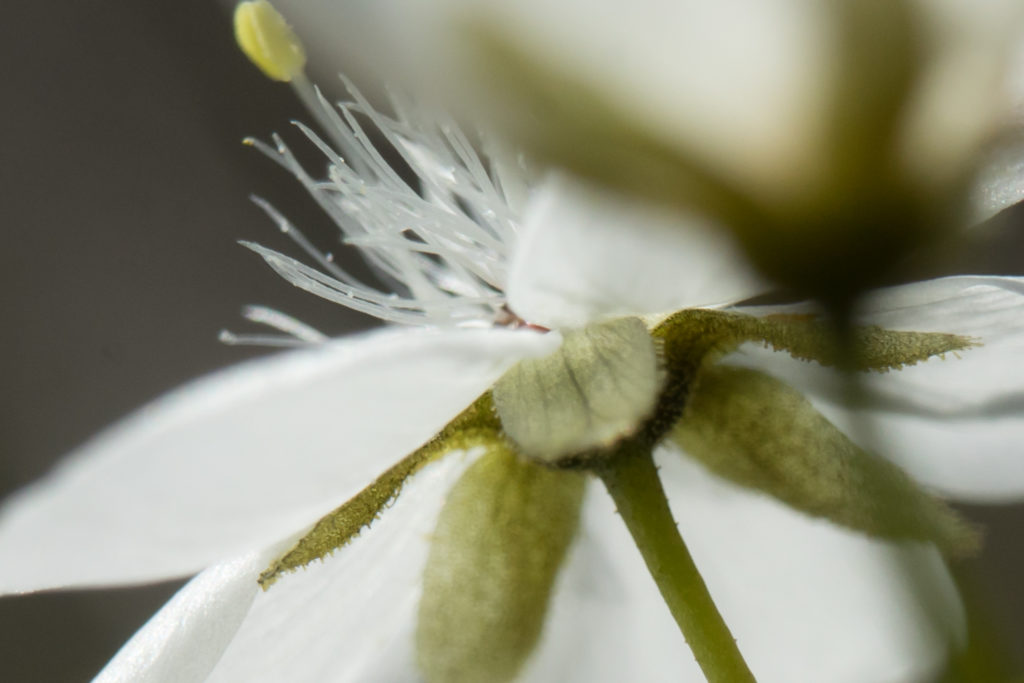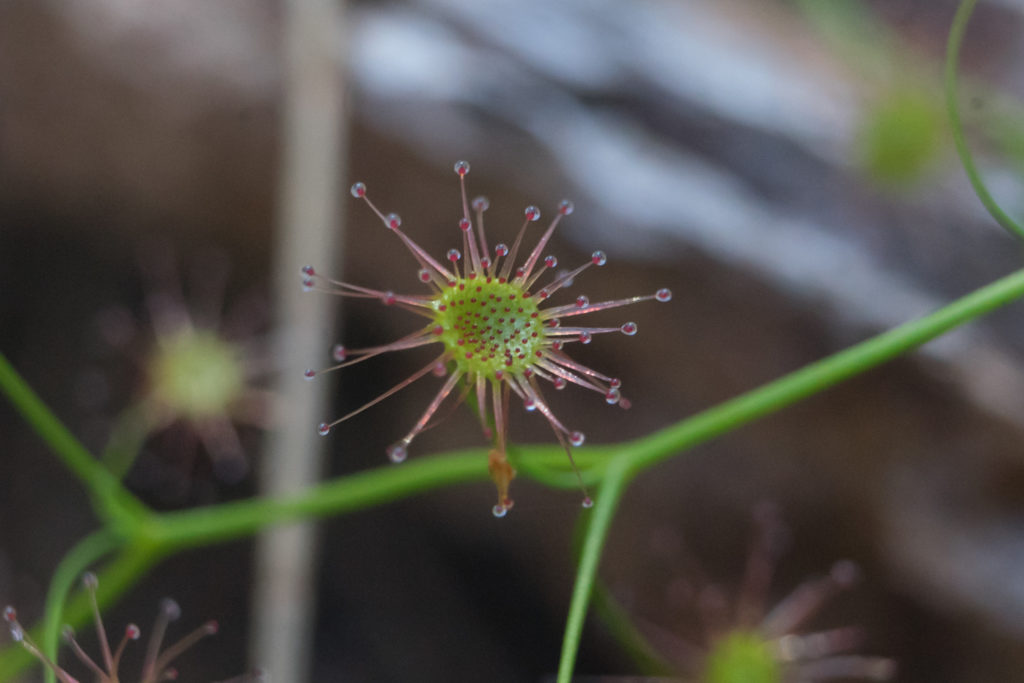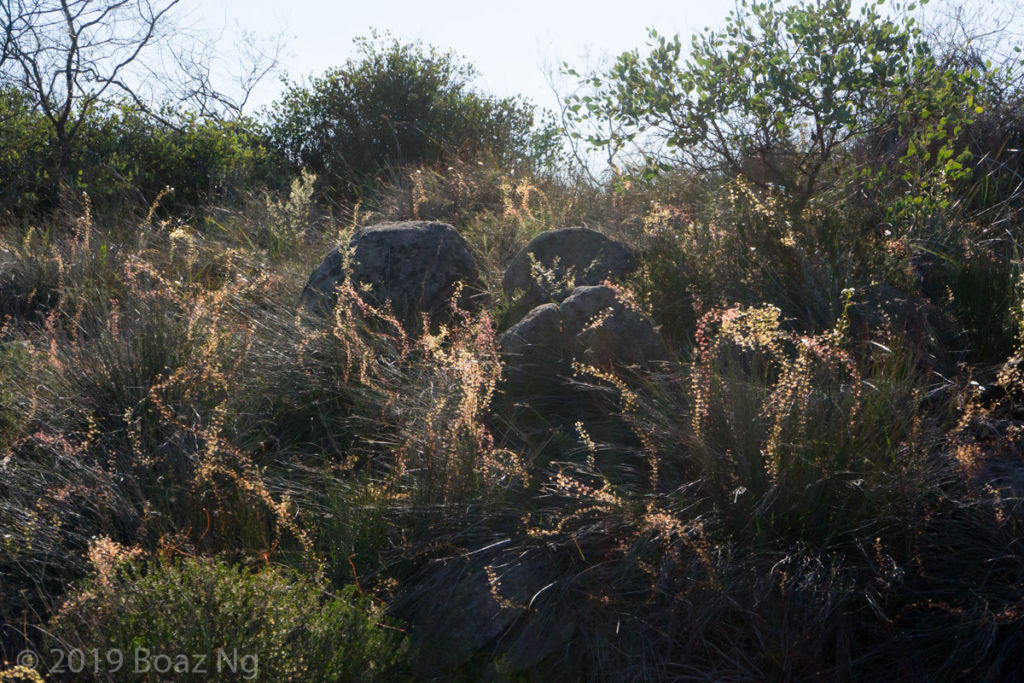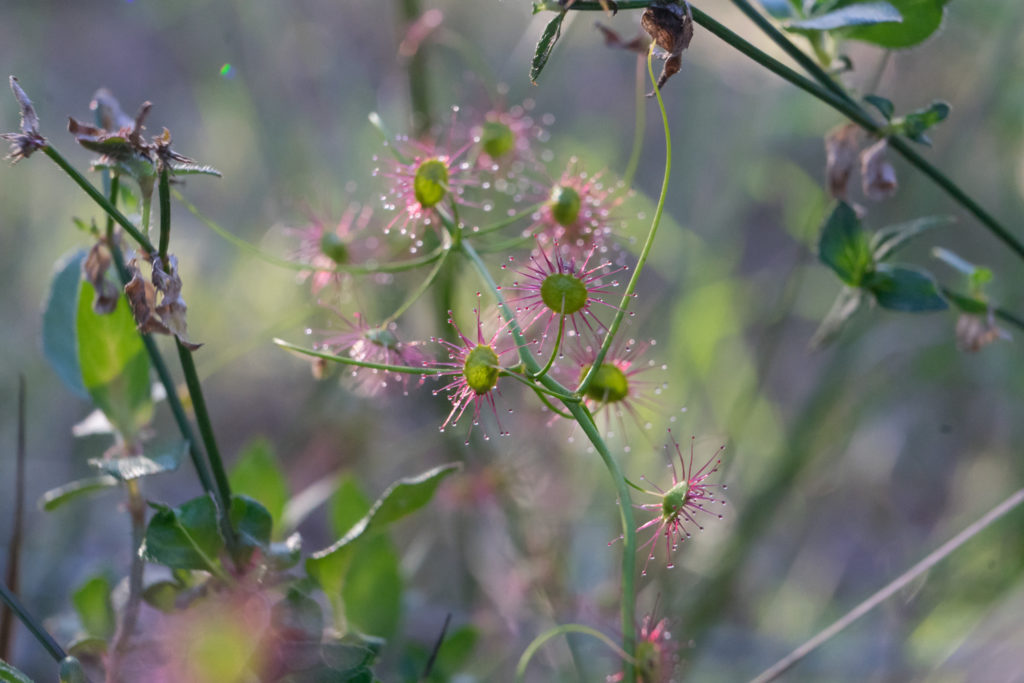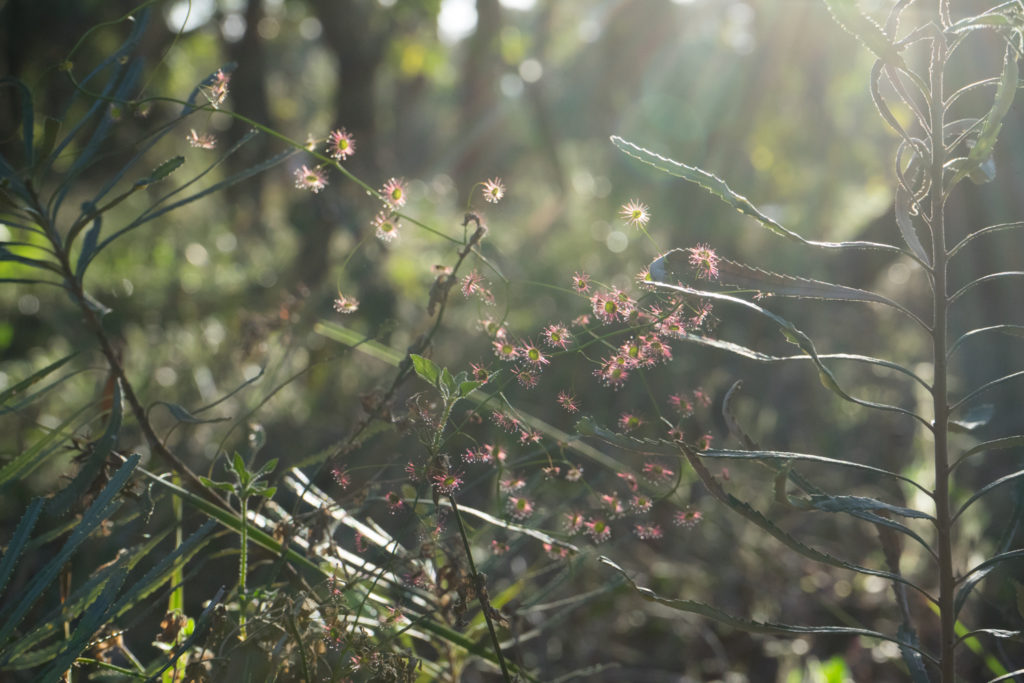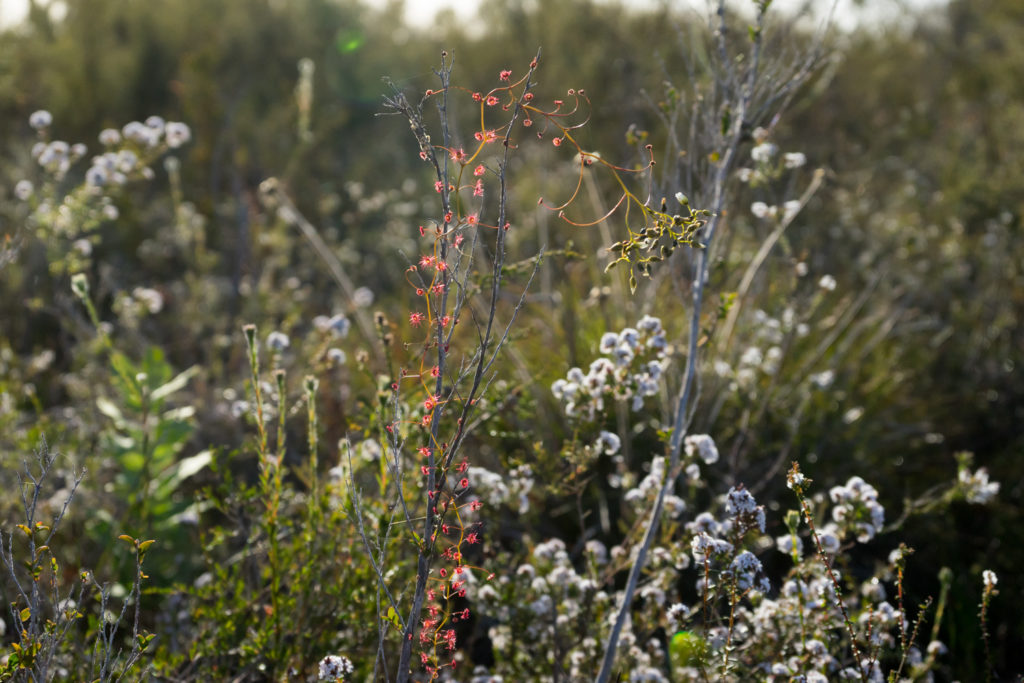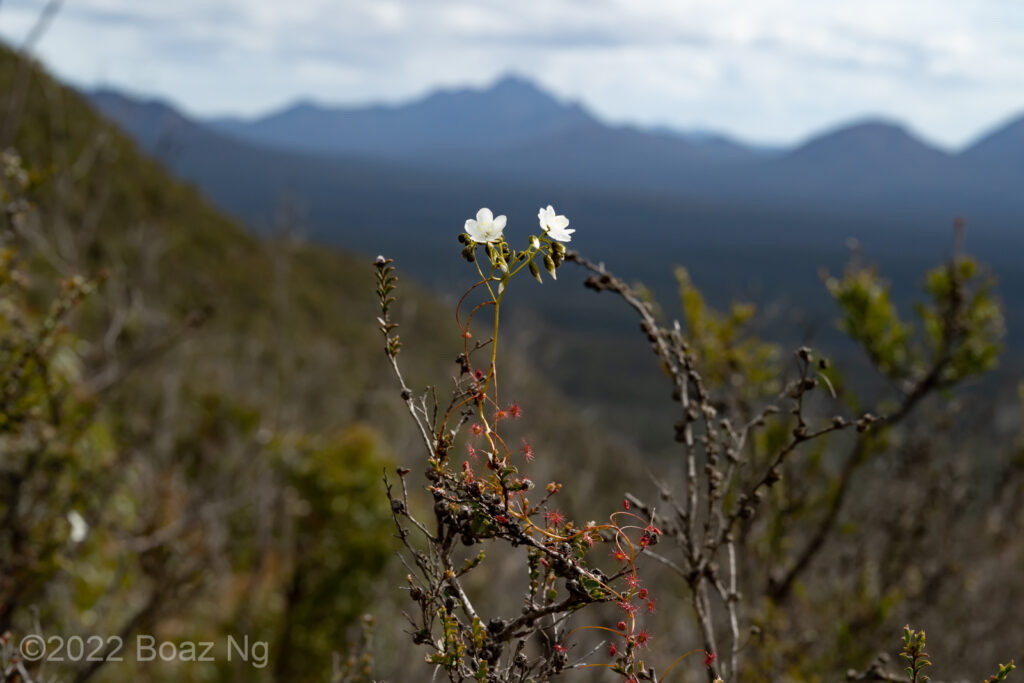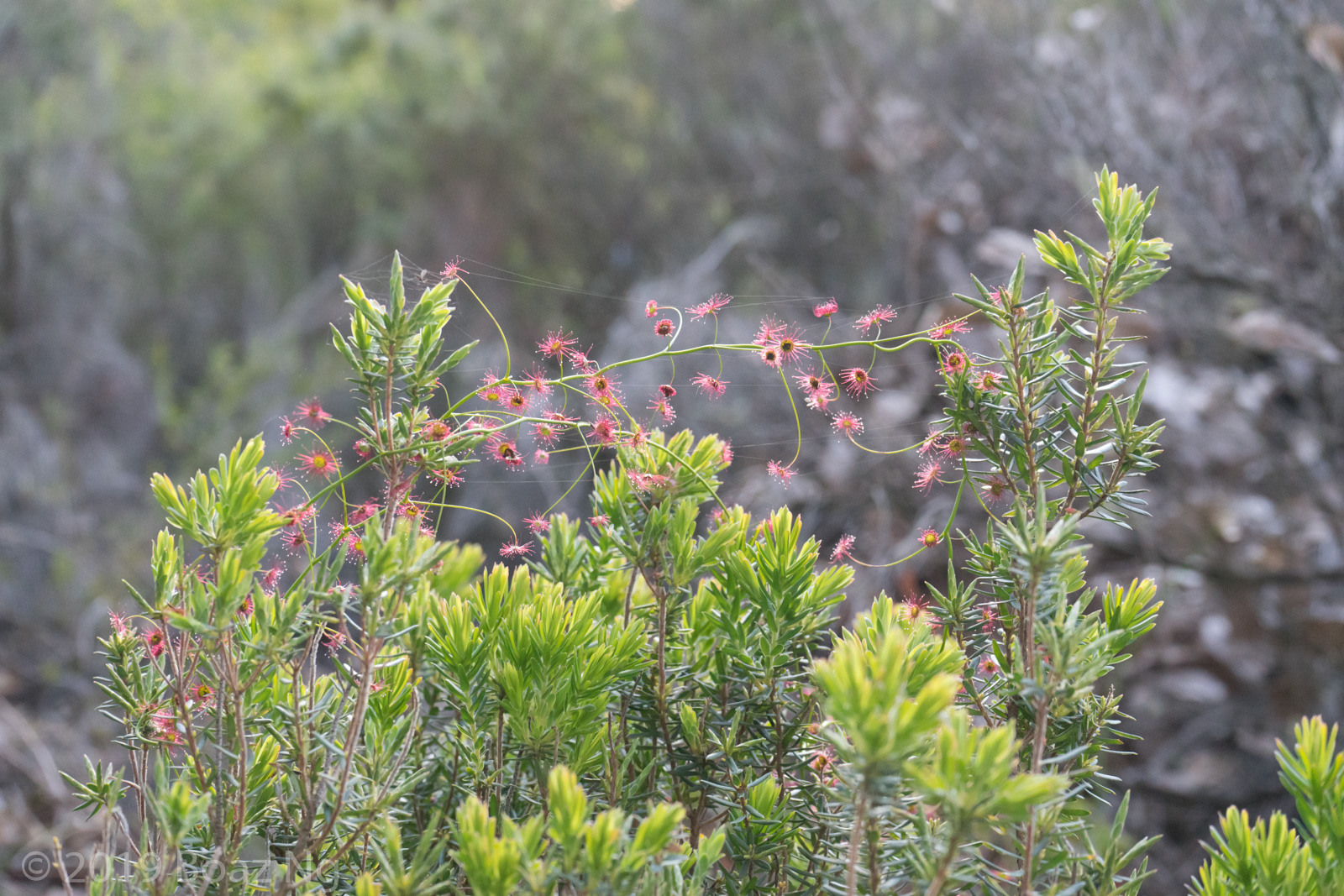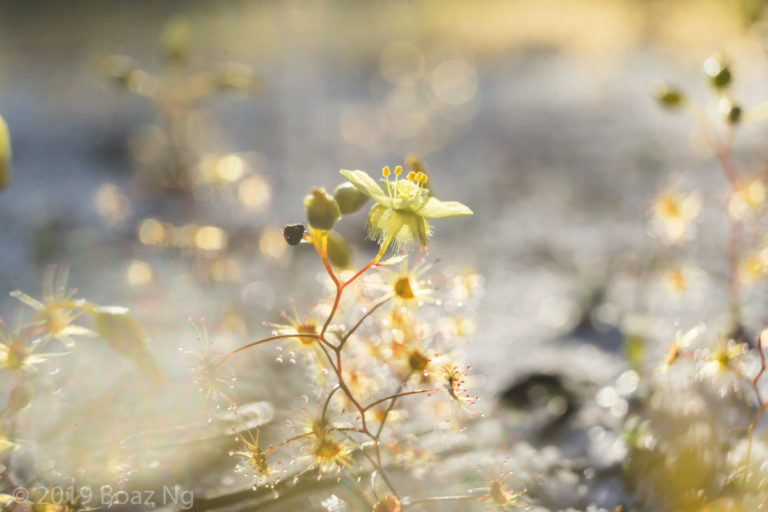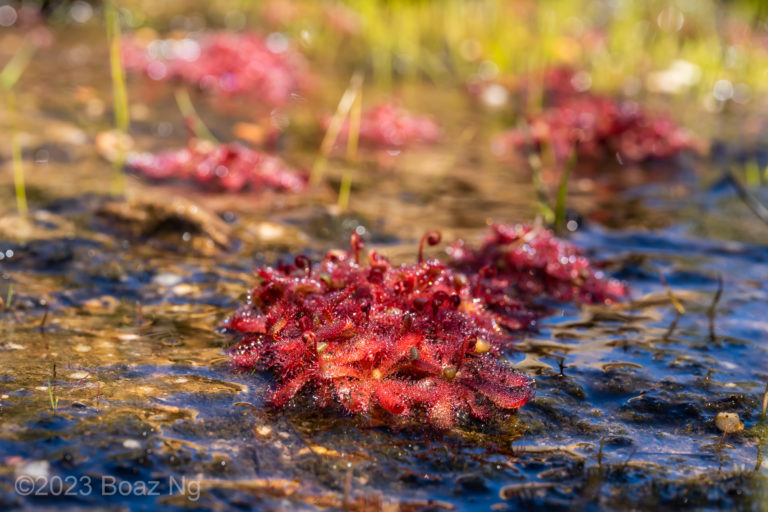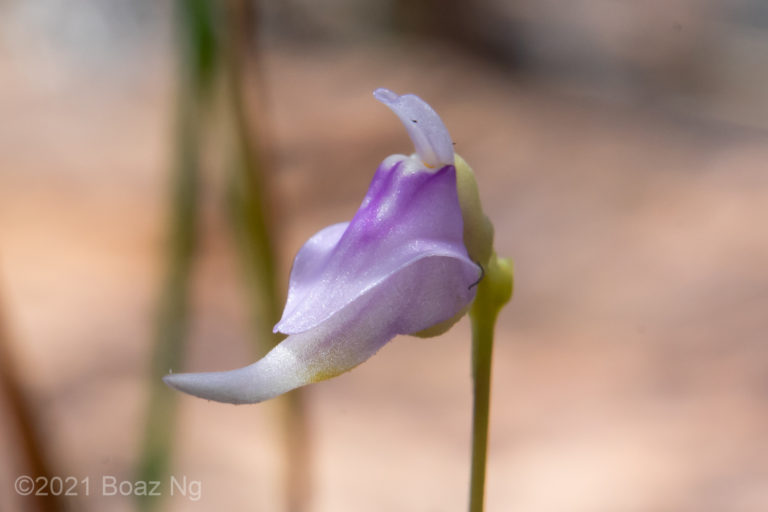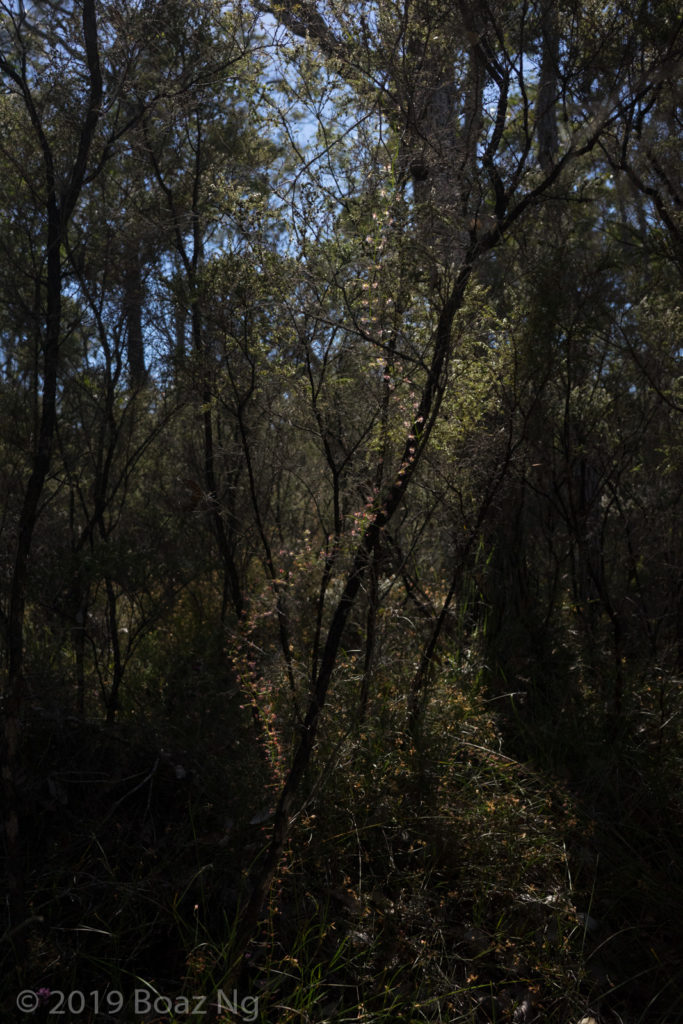
Of all the carnivorous species in Western Australia, Drosera pallida was one of the most commonly sighted during my expedition. This scrambling species is notable for its long stems, which I observe to grow well in excess of 2 meters long. The leaves occur in groups of three, with one leaf that has a particularly long petiole. The lamina are orbicular, although very slightly flattened at the top. It uses its leaves to latch onto and climb surrounding vegetation.
I found the species in open forest in areas where the canopy is sparse. The species also grows en mass on granite outcrops, scrambling atop bushes that colonise the edge and depressions of the rocks. The species occurs as part of a complex, with distinctions between the south coast and northern forms. Further study might warrant the separation of these taxa.
The species can be distinguished from the similar species Drosera macrantha by its mostly glabrous stems (a fine covering of glands is present in the upper axis). Plants from the south coast can distinguished from Drosera erythrogyne by its red tentacles, orbicular leaves and sepals, which have only a sparse covering of glands (D. erythrogyne has laminae that are flattened or notched at the top). It can be distinguished from Drosera drummondii and thysanosepala by the margins of the sepals (D. pallida has slightly serrated edges whereas those in the D. menziesii complex are fringed with long hairs).
